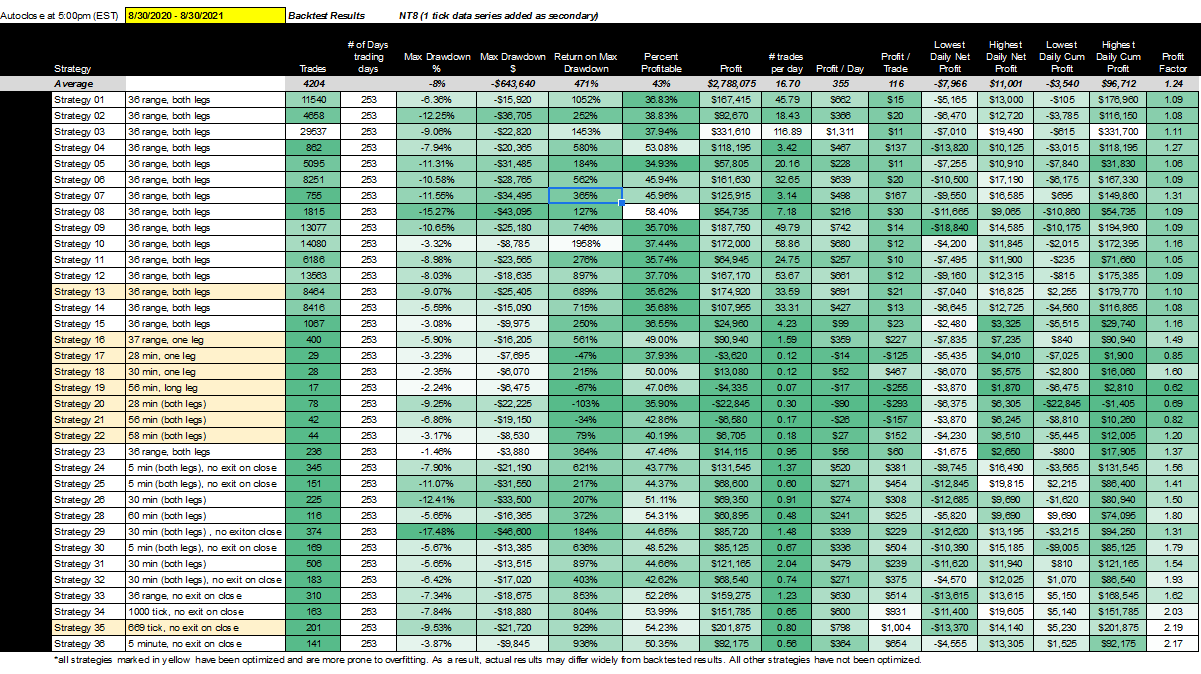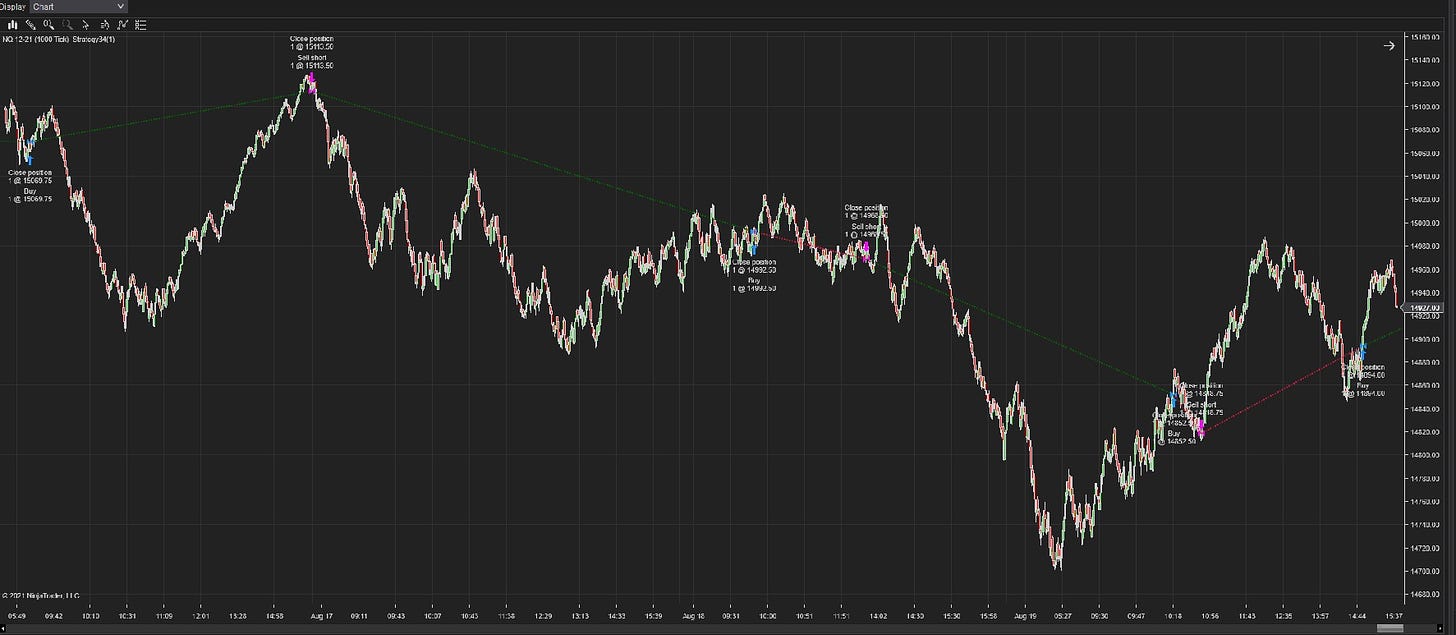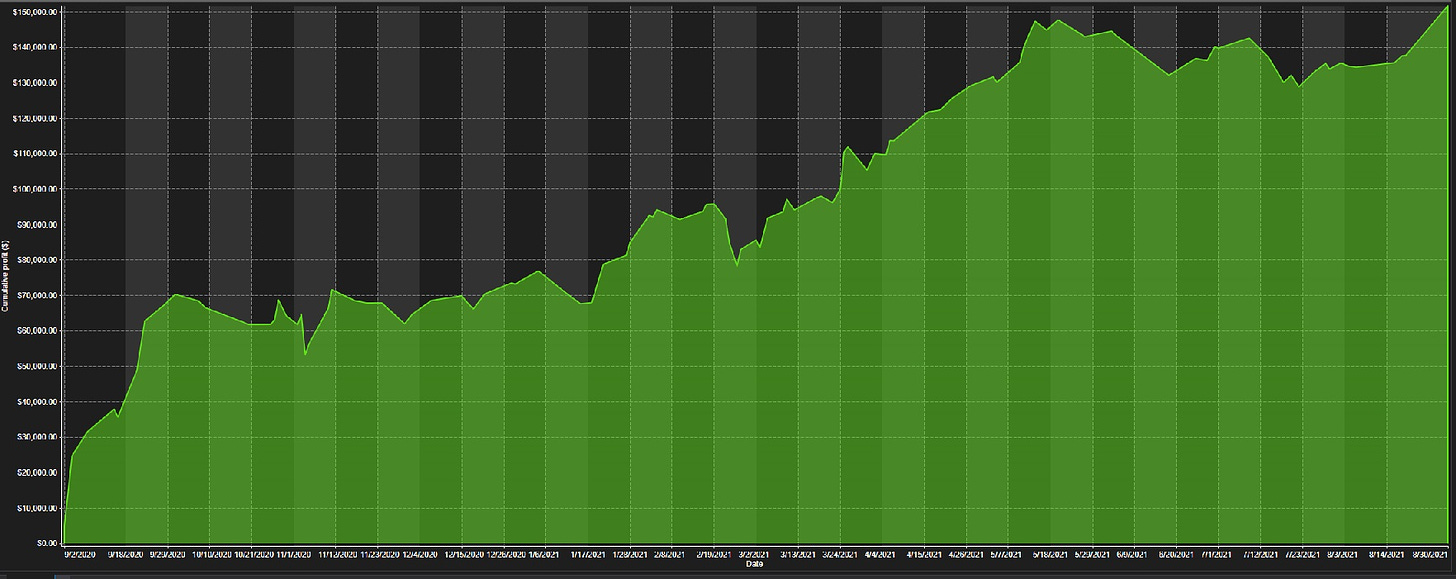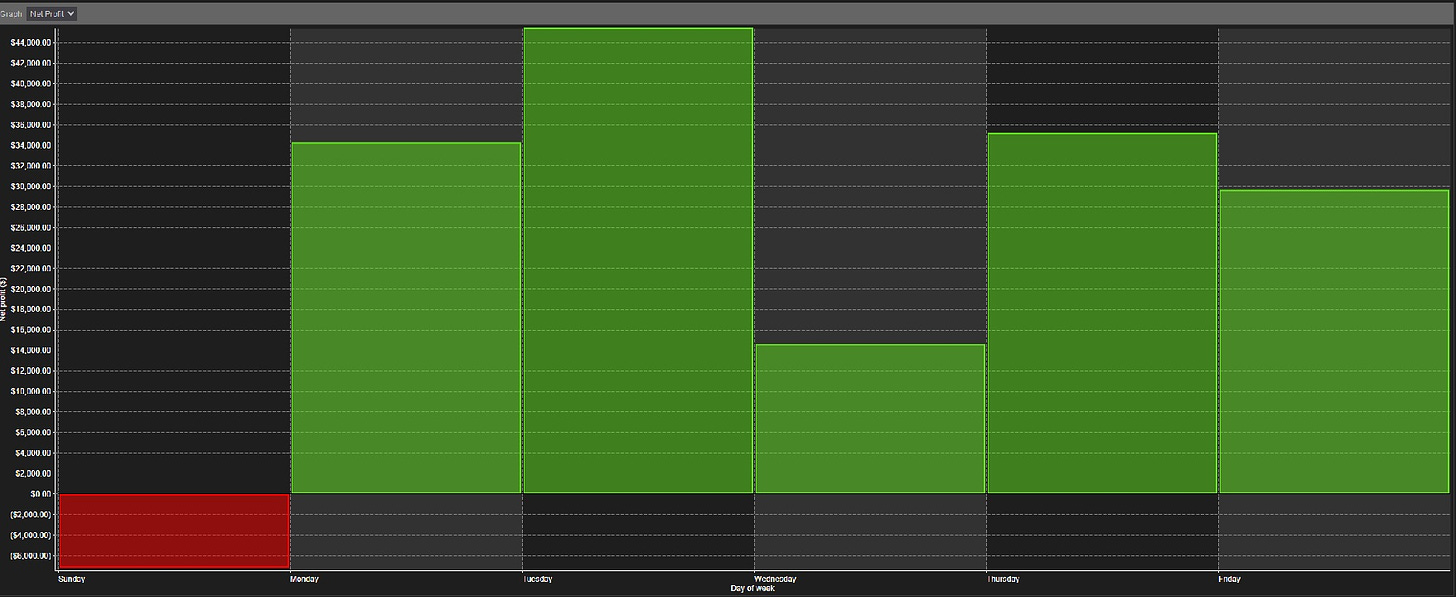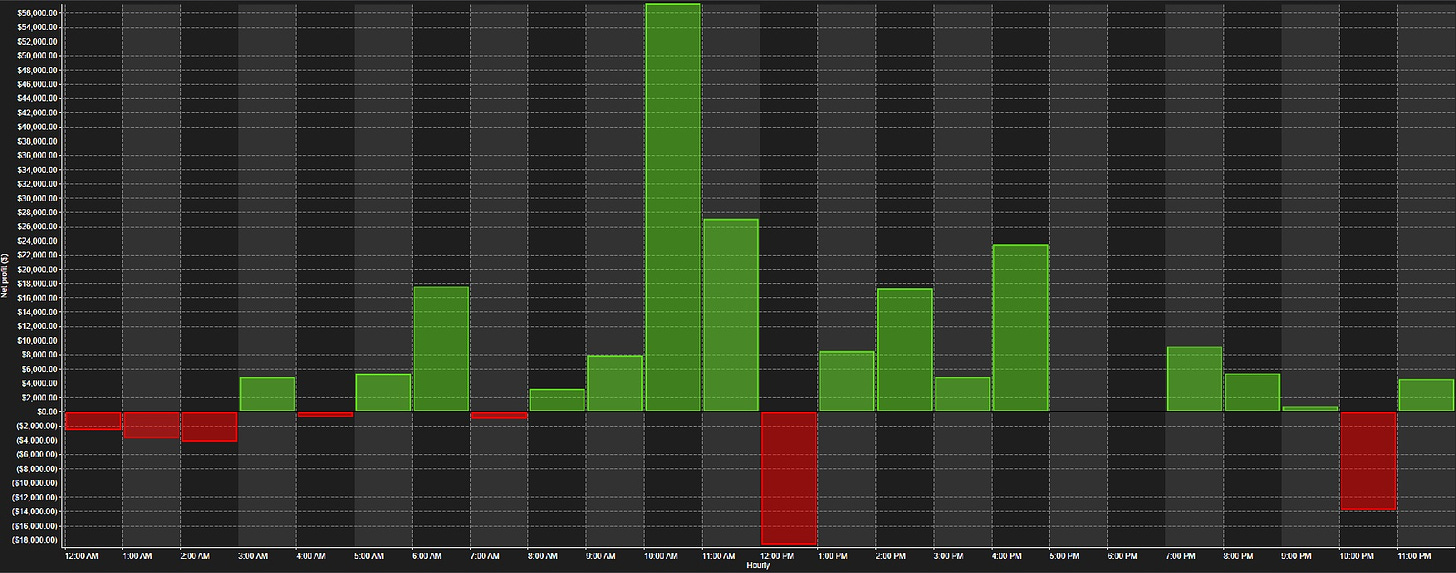Automated Trading Strategy #34 (public version)
Strategy 34 made $151K in the last 12 months, makes $931 per trade and has a Profit Factor of 2.03.
There is no guarantee that these strategies will have the same performance in the future. Some may perform worse and some may perform better. We use backtests to compare historical strategy performance, but there are no guarantees that this performance will continue in the future. Trading futures is extremely risky. If you trade futures live, be prepared to lose your entire account. We recommend using our strategies in simulated trading until you/we find the holy grail of trade strategy.
Click on the table to enlarge.
*See below for Column Definitions
Strategy #34 Description:
Futures Contract: NQ
Strategy 34 is the same as 33, which is one of our best strategies to date. Instead of using 36 range as the default data series, however, it uses 1000 tick. We decided to break them out like this to show the performance level of each data series.
None of the indicators used in this strategy are new, but we are using two commands that might be confusing: look back period and bars ago. We explain what these are in Strategy 33. In general, look back is for the signal (cross above, cross below, greater than, less than, etc), while bars ago is used for the indicator to define a period.
Subscribers: Click here for the full strategy description and download in Ninjatrader 8 (C#).
For links to all strategies and the most recent performance chart, click here.
Download Instructions
Ninjatrader download instructions are listed below.
Click on the link provided to download the file.
Download the Strategy to your desktop, keep them in the compressed .zip file.
From the NinjaTrader Control Center window, select the menu Tools > Import > NinjaScript Add-On
Select the downloaded file from your desktop
If you've never used/run a strategy in NinjaTrader 8, NinjaTrader provides instructions here.
This is what the strategy looks like in chart form. It makes on average .65 trades per day, and has an average net profit of $600 per day or $931 per trade:
This is the cumulative profit of Strategy 34 over a 1 year period. It never falls lower than $5,140, but this is due to timing more so than anything else. Still, it has a profit factor of 2.03, which means that the ratio of gross profit to loss is 2.03. In other words, the strategy made 2.03 times more money than it lost during the period. Note: Our next 2 strategies have a profit factor greater than 2.03.
This is how the strategy breaks down on a day-of-week basis. This chart can help with determining the best time to get into a strategy. Tuesday looks like the best day to enter.
This is a chart of the strategy by hour of day. Keep in mind, this strategy does not close at the end of the day, but has a large number of profitable trades in the most volatile hours of the day (EST).
We like this strategy because of its high profitability. It is profitable 54% of the time and has a return on max drawdown of 804%. It also has an MAE, MFE and ETD of .92%, 1.23% and .86%, respectively. While the strategy has a high MAE, anything with an MFE over 1.20% and an ETD of less than .90% is good and this strategy has the second highest MFE in our portfolio. For an overview of where our strategies stand on MAE, MFE and ETD statistics, click here.
This strategy fits much of our criteria, but has a drawdown of $18,880, which isn’t bad if you get into the strategy on a good day, but it is still higher than what we’re looking for. You’d want to have at least a $25K account to trade this strategy.
We’re looking for a strategy that has high profitability, low drawdown and makes at least 253 trades per year. We really like this strategy, but the hunt continues.
For links to all strategies click here.
*Column Definitions:
Strategy - The name of the strategy.
Trades - The number of trades used in the backtest to analyze performance. Our goal is ~1,000 trades for comparison.
Start date- The beginning date of the backtest.
End date - The ending date of the backtest.
# of days - The number of days in the strategy.
Drawdown - This refers to the maximum drawdown statistic, which provides you with information regarding the biggest decrease (drawdown) in account size experienced by the strategy. Drawdown is often used as an indicator of risk.
Drawdown = single largest Drawdown
As an example, your account rises from $25,000 to $50,000. It then subsequently drops to $40,000 but rises again to $60,000. The drawdown in this case would be $10,000 or -20%. Take note that drawdown does not necessarily have to correspond with a loss in your original account principal.
Return on Max Drawdown - We’ve added a dollar value for max drawdown along with a measure of return (return on max drawdown), which is calculated by dividing net profit by the max drawdown. In this way, max drawdown is considered the max capital investment. You can use the dollar value of max drawdown as a proxy for how much capital you need to trade the strategy. And, the higher the return on max drawdown, the better the strategy is in terms of risk/reward.
Percent Profitable - This is a metric that shows the number of winning trades divided by the number total trades.
Profit - The net profit made on the strategy for the backtest.
#trades per day - The average number of trades made per day using the strategy.
Profit / Day - The average profit made per day.
Profit / Trade - The average profit made per trade.
Lowest daily new profit - The worst performing day of the strategy in the backtest.
Highest daily net profit - The best performing day of the strategy in the backtest.
Profit Factor - Gross Profit divided by Gross Loss
Lowest daily cumulative new profit - The worst performing day on a cumulative basis.
Highest daily cumulative net profit - The best performing day on a cumulative basis.




